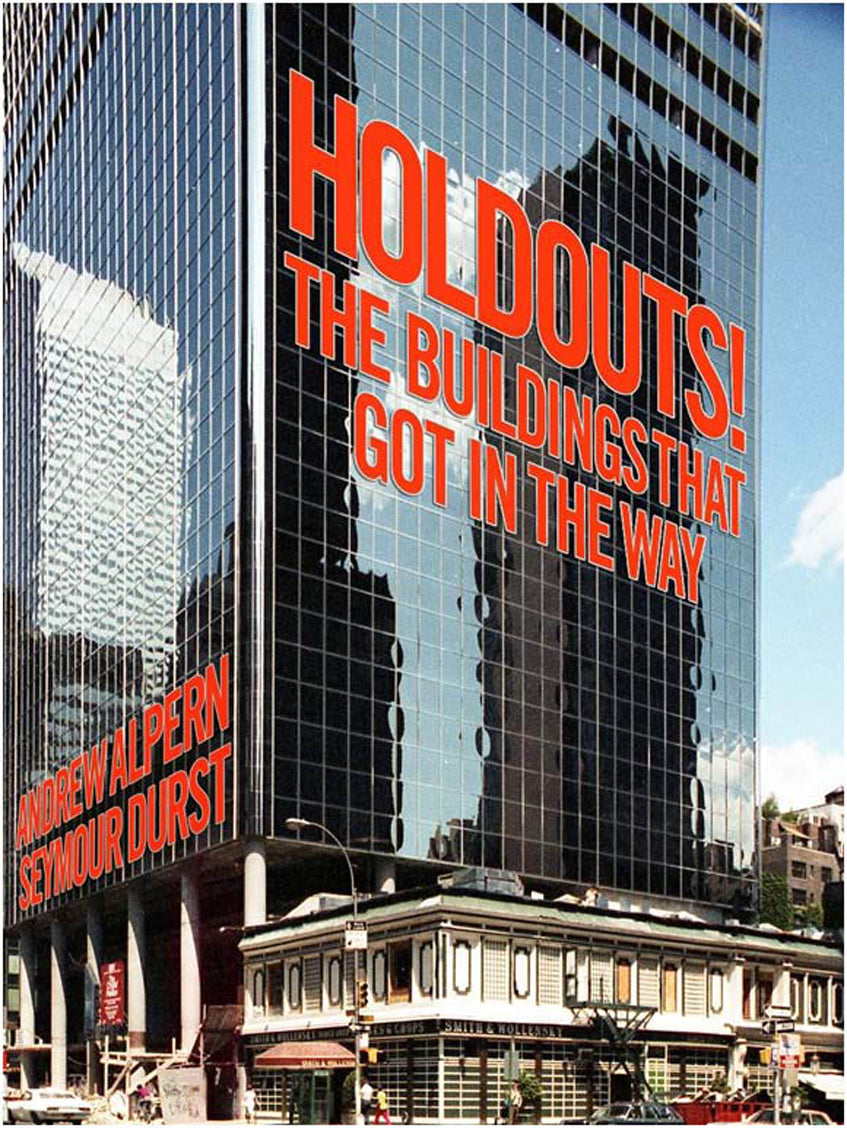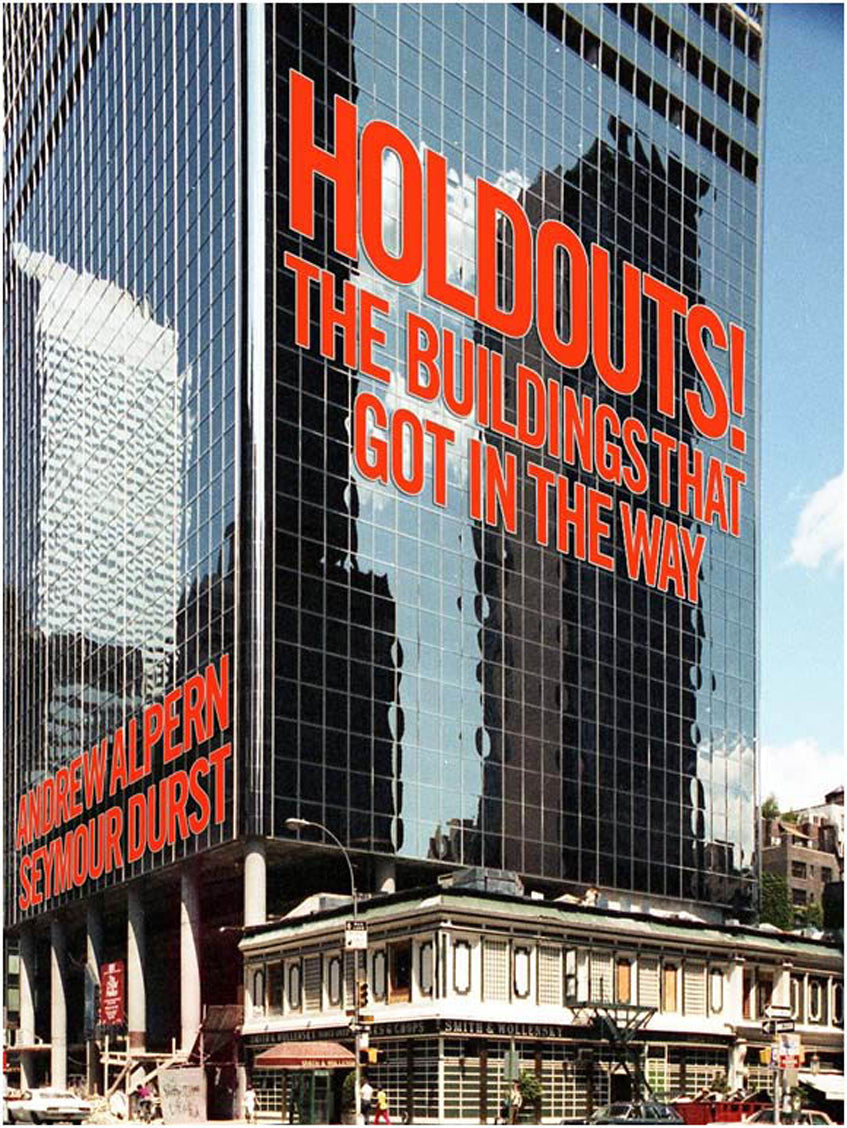
A strip of land 5 inches wide and 78 feet deep owned by a taxi driver whose asking price killed a developer's plans for a huge apartment house.
An empty 9- by 20-foot site in the middle of a Wall Street office building created by the site's former use as an outhouse at the end of the eighteenth century.
A two-story building surrounded by a tall apartment house on Upper Broadway that owes its continued existence to the timing of Prohibition.
These snapshots are of holdouts that got in the way. They appear whenever urban densities make land valuable and wherever a profit motive exists to trigger change. Holdouts are often thought of as David versus Goliath battles, but is David the little homeowner who doesn't want to abandon his hearth to the big heartless developer? Or is David the harried builder who has invested huge sums of money in buying up ninety percent of the land needed for development—whose benefits would be enjoyed by thousands of citizens—but whose plans are thwarted by the one landowner who controls the critical land parcel without which the project is doomed?
What motivates a holdout? What are the problems when a holdout gets in the way? What impacts do holdouts have on how new buildings are planned and designed? What happens when a new structure has to be constructed next to, around, or even above an existing one that can't be removed? How have holdouts been dealt with over the years?
Holdouts! depicts with vivid clarity the colorful personalities and outrageous actions that emerge in these stark confrontations. It describes epic battles that have been fought to erect buildings in New York. More than 200 illustrations and photographs show the holdouts before, during, and after the construction they delayed. This unique pictorial history will delight architecture buffs, New Yorkers, urban historians, indeed anyone interested in the sometimes hectic, sometimes pathetic, and sometimes hilarious struggles of individuals against real estate developers whose projects are so essential to the continuing economic viability of our large cities.


